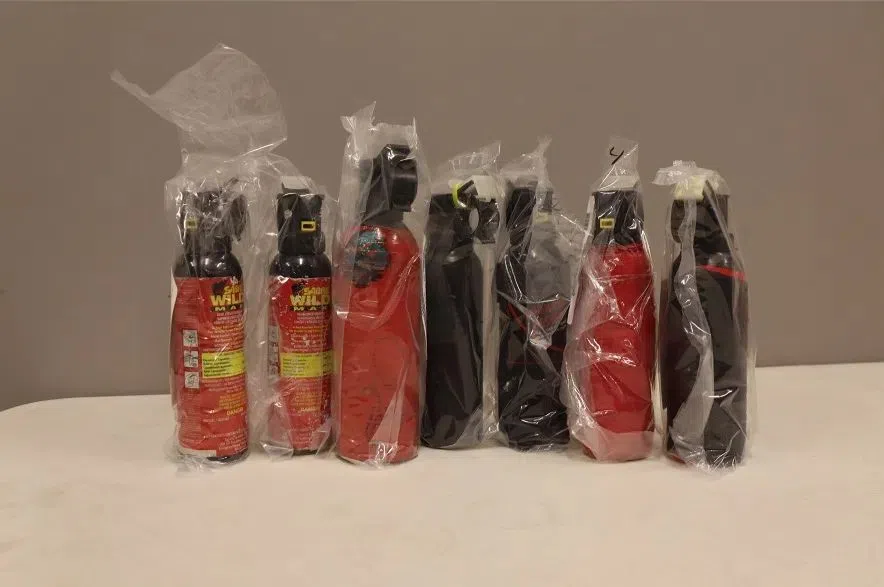Three 16 year olds were charged with assault with a weapon after a bear spray incident at a Regina school on Wednesday.
School resource officers were dispatched to a school on Fines Drive at around 10 a.m. for a weapons call. Police did not name the school, but the address corresponds with F.W. Johnston Collegiate.
Read more:
- Canada Post workers walk off job in protest of sweeping changes
- Outdoor educator calls bear spray bylaw a step forward but questions enforcement
- Are Saskatchewan’s new bear spray laws working?
In a statement, police said they were called to the school after two girls were assaulted with bear spray outside the building. The suspects fled before the officers arrived, police said, and both girls were treated for bear spray exposure at the scene.
A girl and two boys were arrested after an investigation. They cannot be named due to provisions of the Youth Criminal Justice Act, but police said they are expected to appear in court on November 10.
What is bear spray?
Bear spray is a deterrent containing capsaicin, a chemical found in chili peppers. The canister releases a cone-shaped cloud of spray at a speed of over 100 km/h, approximately 10 m away. Capsaicin inflames the eyes and respiratory system of both animals and humans.
According to bearwise.org, the spray is oil-based, so first aid for bear spray is to wash off residue with soap and water, don’t rub your eyes or nose, and rinse your eyes with clean water until the irritation lessons. Effects generally wear off in about 45 minutes, the bear awareness site says.””
In 2024, the provincial government announced new regulations aiming to reduce the number of criminal incidents involving bear spray.
The changes include regulations to restrict the possession of bear spray in public urban spaces and a ban on altering bear spray to hide or disguise the product’s identity. Anyone charged under the new regulations could face fines of up to $100,000.
According to the provincial government, police in Saskatchewan have responded to over 3,000 bear spray incidents over the last five years, but the total number of incidents involving bear spray could be much higher when factoring in unreported cases.”
Read more:











